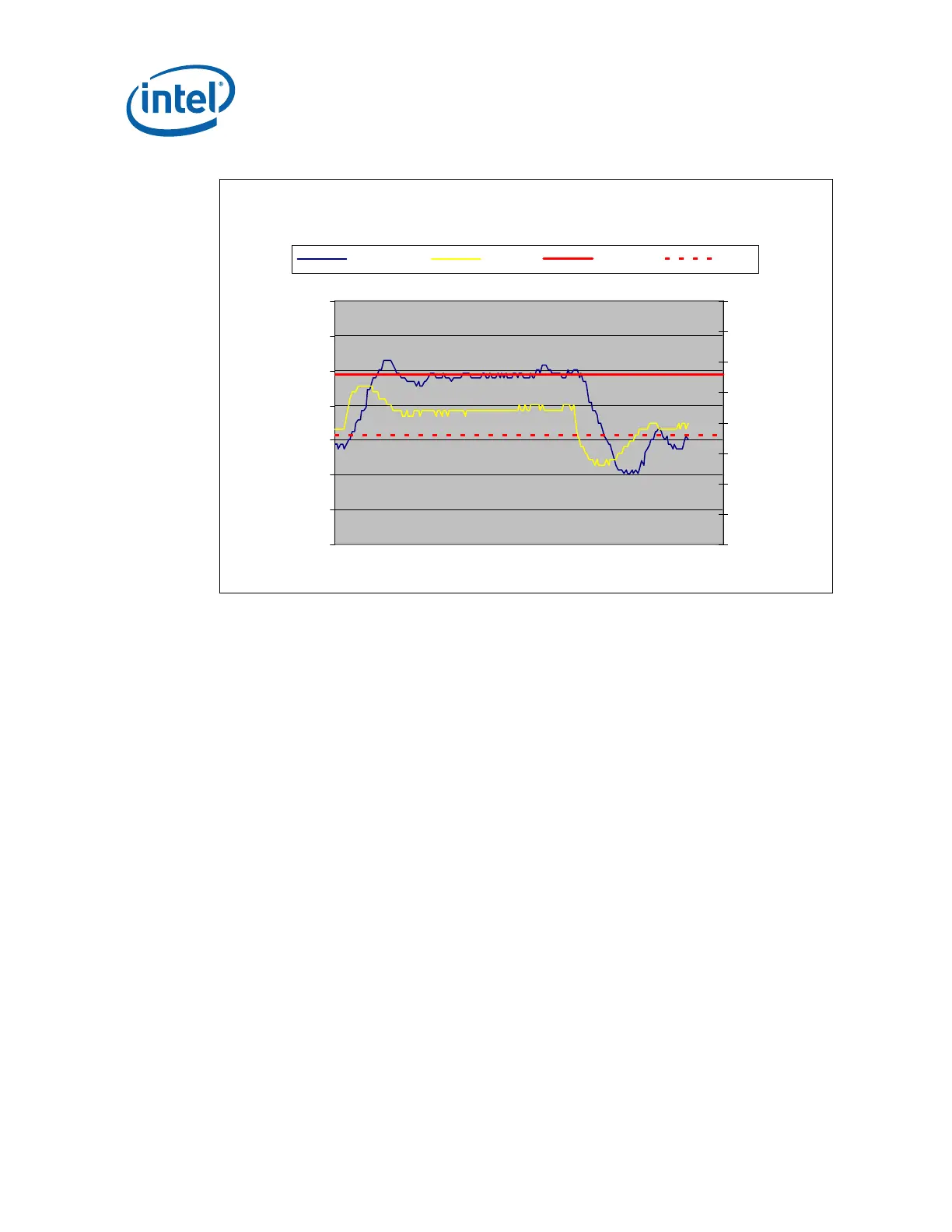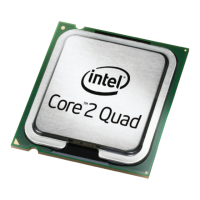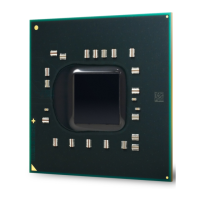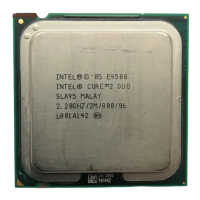Legacy Fan Speed Control
102 Thermal and Mechanical Design Guidelines
Figure 61. Temperature Range = 10 °C
0
500
1000
1500
2000
2500
3000
3500
Time (s)
RPM
40
45
50
55
60
65
70
75
80
Tdiode (C)
Fan RPM Tdiode Tcontrol Tlow
It should be noted that having T
SENSOR
above T
CONTROL
is expected for workloads near
TDP power levels and high system ambient. See Section
E.4 for additional discussion
on T
CONTROL
versus Thermal Profile
For use with the ATX Boxed Processor enabled reference solution a T
RANGE
value of
10°C is recommended. For BTX Boxed Processor enabled reference solutions T
RANGE
value of 7 °C is recommended.
E.2.1.2 Minimum PWM Duty Cycle
The final step in determining the FSC setting is to determine the minimum PWM Duty
cycle. This is the fan speed for any T
SENSOR
< T
LOW
. The selection of this value is
dependent on
•
Acoustic target at system idle
• Voltage regulator cooling
For a motherboard design intending to use the Boxed Processor or the enabled
reference thermal solution the recommended minimum PWM duty cycle is 20%.
Note: Set minimum PWM Duty Cycle only as low as required to meet acoustic requirements.
The FSC design needs to accommodate transition from a low power state to TDP
workloads without having PROCHOT# becoming active.

